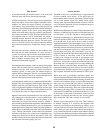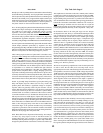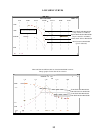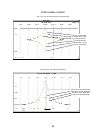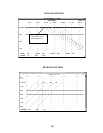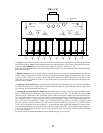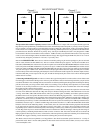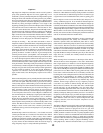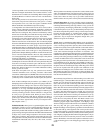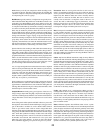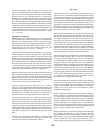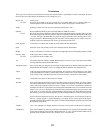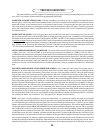Equalizers
EQs range from simple bass and treble controls on a hifi system to
pretty tricky parametric EQs and 1/3 octave graphic EQs. As an
audio freak, you have probably tried quite a few EQs and have gotten
both great results and sometimes less than great and you probably
have a favorite EQ. Now that you probably have a digital system,
you may have questions about these digital EQs and the differences
between any analog and digital techniques. Let us begin at the
beginning, and then get into some real techniques. Who invented the
first electronic tone control? Who knows? The first hints of “flat”
electronics came decades later. Simple bell and shelf EQs seem to
have been born in the 1930's for telephone company use. The Pultec
passive circuits came from that era at Western Electric. "Graphic
EQs" seem to have been invented in the mid 60's and were common
by the early 70's. A 19 year old prodigy, George Massenburg first
described, in a 1971 AES paper, the “Parametric Equalizer”.
All EQs do one thing — they can make some bands or areas of
frequencies louder or quieter than others, manipulating the frequency
response. Speakers and mics do that to but we normally think of EQs
as something that allow us to alter the frequency response,
deliberately, with some knobs and buttons - including the GUI ones.
Some equalizers have no controls, they are part of a circuit and
generally are almost “invisible” to the user. A good example of this
is the EQ circuits used as “pre-emphasis” and “de-emphasis” used
for analog tape machines and radio broadcasting. The idea of these
is to boost the high frequencies before it hits the tape (or air), then
reduce the highs on playback (or reception). This reduces the hiss
and noise and usually allows a hotter signal which also improves the
noise performance. These EQs usually have trimmers available but
we would rarely consider using them for adjusting the tone. Instead,
the object is to get a ruler-flat response at this part of the signal chain.
It is still called an equalizer. In fact the original definition of
“equalizer” was a device to restore all the frequencies to be equal
again, in other words, force the frequency response to be as flat as
possible.
Other common EQs that you are probably familiar with include the
common 1/3 octave graphic EQs with about 30 or 60 cheap sliders
across the front panel. These are usually a good tool for tuning a
room, but they may be a difficult thing to use for individual sounds.
Most 1/3 oct EQs excel when a number of little tweaks spaced across
the spectrum are needed but not great for wide tonal changes. Too
many resonances. Some room tune experts are now relying on
parametrics with continuously variable frequency knobs apparently
to "nail" the peaks. One reason 1/3 octave EQs have a bad name are
the "real time analyzers" that display a single aspect of the frequency
response but without any time information, real or otherwise.
People often get much better results with warble tones, or tuning
rooms by ear with music. 1/3 octave EQs are appropriate for some
mastering tasks but are probably less used because they tend to scare
clients. The Massive Passive was not intended for room tuning.
Perhaps a future version with active constant Q mid bands in
combination with a good 1/3 octave EQ may be a very nice thing for
that tricky job.
Parametric EQs come in lots of flavours, 3, 4 or 5 bands, most with
3 knobs per band and lots of variations. The earliest ones offered
only bell shapes, no shelves, no filters. Today's most common
variation has 2 mid bells with Q, a high shelf, low shelf and filters.
We see these in many consoles and in outboard EQs at a wide range
of prices. Almost all have limitations either in boost/cut range, Q
range, frequency range or overlap and audio performance.
Now we have a new breed of digital parametrics that have few
limitations - other than does it actually sound good and is it available
for your format and is it stable and bug-free and is it a hassle to get
a signal in and out of it? Within their realm, some are getting good.
Passive EQs have come out over the the 60 (150) odd years for a
variety of different purposes. If we include all inductor/capacitor
based EQs the list includes API 560's, most of Rupert's designs up
to the 80's, all the Pultecs and Pultec clones and a number of high end
1/3 octave graphics. Essentially the list includes most of the desirable
vintage EQs that comprise many engineer's all-time favorites. The
Massive Passive is one of the only non-clone tube passive EQs and
the only one we know of that is 4 band quasi-parametric with boost
and cut on each band. There ain't nothin' like it.
Now there are a large number of enhancers, exciters, extenders and
multi-band compressors, that usually use combination of EQ,
distortion, dynamic effects and deliberate phase shift to create
effects that are related to EQ. They all seem to come with a warning
"not to overuse". The more "secretive" it is the more we should hold
it suspect. Some of these are boxes are useful and often a reasonable
alternative to conventional EQs. Sometimes, we think "if my EQs
and Limiters did what I wanted, then I sure wouldn't use this". We
hope that the Massivo helps towards this quest. If you like what the
magic boxes do, use them, but carefully because the results are
rarely reversible.
What most EQ's have in common is in the shapes of the shelves.
Almost all shelves can be designated as "first order" which means
that a single capacitor (or inductor) is used to shape the frequency
response. Second order implies two components, etc. A first order
filter is generally 6 dB/oct, second order should be 12 dB/oct, third
order 18, etc. Shelf EQs never quite get to 6 dB/oct and at the steepest
point seem to be 4.5 dB/oct which is pretty gentle and why a 10K
boost seems to affect mids. Bell curves are normally second order
but arranged to create a damped resonance. On a first order shelf, the
capacitor may be surrounded by any number of components to
create gain or to simulate an inductor or for other purposes. These
other components are a large reason why different EQs sound
different, but that single capacitor sets up a frequency response
curve that is very similar for almost all EQs. The shelves on the
Massive Passive combine a first order shelf with a variable depth
second order bell. At wide bandwidths it acts first order and at
narrow bandwidths approaches third order. We have played with
true second and third order shelves with real 12 and 18 dB/oct slopes
and they sound pretty damn good. When you boost or cut a band of
frequencies, with a steeper slope, you affect the frequencies that you
are aiming for, with much less action on other frequencies that you
didn’t intend to touch. Of course, to build an EQ like this with
frequency selection (even more need) the component cost and
complexity rises fast.
The future of EQs may bring us bells where each side (high & low)
plus the top "flatness" can be adjusted separately. We are beginning
to see variations of shelves in plug-ins but so far it is just Tom
copying Dick who mimmicked an analog circuit by Harry. Perhaps
another parameter would be nice like, a sepately adjustable phase
shift or distortion. And if we could bend the rules of nature and have
a non-resonant bell with zero ringing, we might have something
truly new to hear. It would be very transparent but probably quite un-
natural sounding. There is validy to "physical modelling" even in
analog EQ circuits. "Natural" is kinda nice and very easy to listen to.
19



